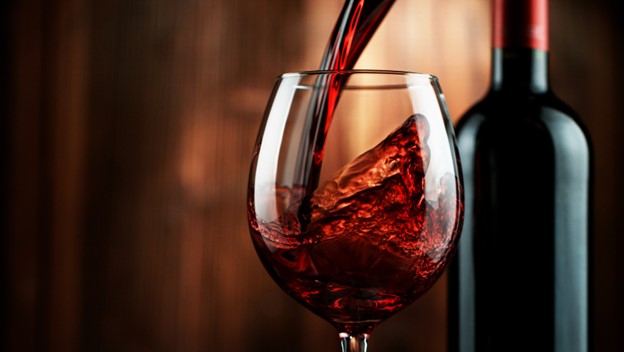If you are a wine connoisseur, or simply enjoy drinking delicious vintages from time to time, then you know that measuring the alcohol content in wine is essential in determining its quality and taste. But how exactly do you go about doing this? While there are many different methods for measuring the alcohol content in wine, it is important to use a method that is accurate, reliable, and easy to do.

What is the alcohol content of wine?
How much alcohol is present in wine can vary depending on a number of factors, including the type of grape used, the level of ripeness at harvest, the winemaking process, and the storage conditions. However, most wines have an alcohol content that falls between 9% and 16%.
Using a Hydrometer
The most common and accurate method for measuring the alcohol content in wine is by using a hydrometer. This simple device consists of a weighted glass tube with a graduated scale that floats inside of it. To measure the alcohol content in your wine, simply pour a small sample into a test jar or vial, insert the hydrometer, and carefully read the scale to determine the accurate abv content. A hydrometer is a very important tool if you plan to make wine yourself.
Advantages:
- Hydrometers are relatively inexpensive and can be found at most home brewing or wine-making supply stores.
- This method is very accurate, provided that you use a good quality instrument to get accurate hydrometer reading.
Disadvantages:
- You need to have a little bit of wine in order to measure it, which can be problematic if you are trying to test a wine that is still in the barrel.
- You also need to be careful when reading the scale on the hydrometer, as even a small mistake can lead to an inaccurate reading.
Using a Test Kit
Another way to measure the alcohol content in wine is by using a specialized test kit. These kits include all of the tools that you need, including glass vials and precise testing chemicals. All you have to do is add a bit of your wine sample into one of the vials, add the chemical solution, shake it up, and then compare the resulting color to the included chart.
Advantages:
- Test kits are very accurate, provided that you follow the directions carefully.
- This method does not require a lot of wine, making it ideal for testing wines that are still in barrels.
Disadvantages:
- Test kits can be expensive, especially if you plan on testing a lot of wine.
- This method requires the use of dangerous chemicals, so it is important to follow the directions carefully and dispose of the waste properly.
Using a Refractometer
Another popular method for measuring the alcohol content in wine is by using a refractometer. This device works by measuring the amount of light that is refracted (or bent) when it passes through a sample of wine. The more alcohol that is present, the less light gets refracted, and therefore the higher the reading on your refractometer scale will be.
Advantages:
- Refractometers are highly accurate, as you can get very precise readings with this method.
- You only need a very small sample of wine in order to measure it, which is ideal if you are testing a wine that is still in the barrel.
Disadvantages:
- Refractometers can be quite expensive, especially if you want a high-quality one.
- This method can be a bit tricky to master, and it takes some practice to get accurate readings.
What factors affect the alcohol content of wine?
There are several factors that can affect the alcohol content of wine, including:
The variety of grapes used to make the wine
One of the main factors that affect the alcohol content of wine is the type of grape used to make it. Grapes that are used to make high-alcohol wines, such as Zinfandel or Port, will typically have a higher alcohol content than those used to make table wines.
The ripeness of the grapes
Another critical factor that affects the alcohol content of wine is the level of ripeness of the grapes at harvest. Generally speaking, riper grapes will contain more sugar and therefore have a higher alcohol content when fermented.
The winemaking process
How wine is made can also affect its alcohol content. For example, wines that are made using the Champagne method will usually have a higher alcohol content than those wine makers who use the bulk method.
The storage conditions
Finally, the way that wine is stored can also affect its alcohol content. Wines that are stored in hot or humid conditions will typically have a higher alcohol content than those stored in cooler, drier conditions.
The climate where the grapes are grown
The climate where the grapes are grown can also affect the alcohol content of wine. Grapes that are grown in a hot, dry climate will typically have a lower alcohol content than those that are grown in a cooler, wetter climate.
The fermentation process
The fermentation process is another important factor that can determine the alcohol content of wine. Wines that are fermented for a longer period of time will usually have a higher alcohol content than those that are fermented for a shorter period of time.

The Aging Process
Finally, the aging process can also affect the potential alcohol content of wine. Wines that are aged for longer periods of time will typically have a higher alcohol content than those that are not aged as long.
How to Adjust your Recipe if you want to change the alcohol content
If you want to adjust your recipe to change the alcohol content, there are a few things you need to take into account. First of all, you need to make sure that the yeast you are using is able to ferment at high alcohol levels. There are also certain ingredients that you can add to wine to increase its alcohol content, such as honey or residual sugar. Finally, you may need to adjust the fermentation and aging processes in order to get the desired results.
How to Store and Serve wine with a high alcohol content
When you store wine with high alcohol content, it is important to make sure that you keep it in a cool, dark place. In case you store wine in hot or humid conditions it will typically have a higher alcohol content than those stored in cooler, drier conditions. It is also important to avoid serving wine with a high alcohol content too cold. This can cause the alcohol to evaporate and make the wine taste “hot.” Instead, aim for a temperature of around 55 degrees Fahrenheit.
When serving wine with high alcohol content, it is also important to use a decanter. It will allow the wine to breathe before serving. This will help to improve the flavor of the wine and make it more pleasant to drink. Finally, be sure to pour the wine into glasses that are large enough to allow for proper aeration.
Conclusion
The alcohol content of wine is determined by a number of factors. This includes, the type of grape used, the level of ripeness at harvest, the winemaking process, the storage conditions, and the aging process. The climate where the grapes are grown can also affect the alcohol content of wine. Wines that are made using the Champagne method or that are fermented for a longer period of time will typically have higher alcohol content. When you store or serve wine with high alcohol content, it is important to make sure that you keep it in cool, dry conditions and serve it at the right temperature.

